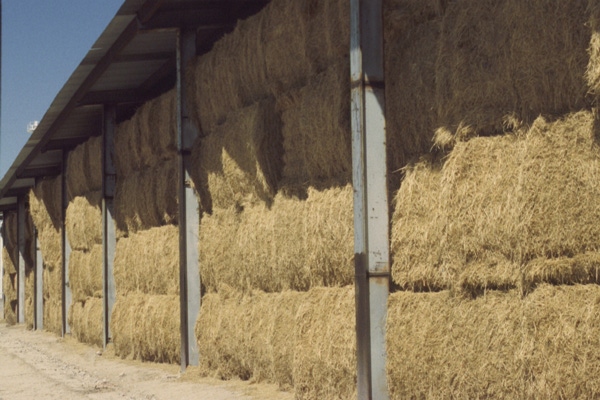
It is no secret that alfalfa has long been a favored hay variety by cattle producers and dairymen across Texas, especially for ruminants requiring high energy hay for rapid development and growth. For one, alfalfa hay is very digestible and can be high in crude protein, energy, vitamins, and minerals.
But thanks to last year’s historic drought, the availability of quality alfalfa, like most hay varieties, has been extremely limited, and ranchers and dairymen lucky enough to find out-of-state sources for good alfalfa had to fork over as much as $300 a ton for quality that was at times less than desirable. Now ag economists are warning Texas producers not to expect a great deal of relief this year either, though conditions have improved.
“At one time, about ten years ago, we had upwards of 80,000 Texas acres planted in alfalfa. But with water restrictions in recent years and the drought last year, those numbers are smaller now,” says Dr. Calvin Trostle, Texas AgriLife Extension agronomist. “The total number of acres planted in alfalfa is one of those areas that is difficult for us to gauge, mainly because it is grown in small patches across several areas of the state.”
But Trostle says with Roundup Ready alfalfa now available, producers may opt to return to alfalfa as a forage crop, and alfalfa acres in Texas could actually increase in the coming years.
Forage experts are quick to point out that because Texas cattle herds were culled significantly last year the overall demand for hay will be less this year than in previous years. They also suggest an influx of breeder and stocker cattle could increase the demand for high energy hay before the end of the year.
In other areas of the Southwest, Trostle says New Mexico, a major producer of alfalfa with an estimated 220,000 acres last year, is experiencing “dire water restrictions” as the drought continues to plague large areas of the state.
“In southern New Mexico especially, irrigation districts are limiting water to as little as 8 inches of allocations for ag use, and that might be enough to produce a single crop, but no second or third crop with those kinds of restrictions,” he adds.
Alfalfa healthy across Midwest, but fewer acres
In the lower Midwest, alfalfa conditions are a little better this year after a dry, hot summer and fall season. Because of an early spring, coupled with beneficial spring rains, the outlook for the alfalfa crop in most Midwestern states is looking favorable.
Bruce Anderson, professor of agronomy at the University of Nebraska-Lincoln, reports alfalfa is at least 2 to 3 weeks ahead of schedule across most of the Midwest. He expects higher yields as a result. In fact, in southeastern Nebraska, farmers are reporting they have completed their first cutting. In Jefferson County, dairy demand is high and farmers are currently meeting those needs with high quality alfalfa.
But in spite of a healthy spring crop, the overall number of alfalfa acres is down across the Midwest.
“One good piece of news is that the price of hay has dropped considerably, thanks to a quick start to the growing season and the rains,” Trostle says. “Hay producers in Texas are already working on their second crop. In Hudspeth County, near El Paso, a grower runs about 8,000 acres of alfalfa and I understand he’s getting the water he needs for irrigation. So we are producing alfalfa in scattered areas across the state.”
In the panhandle it is a “hit and miss” landscape. Rain has fallen in select areas while much of the region remains dry and wanting. In East Texas, Trostle says adequate soil conditions and substantial winter and spring rains have provided good acres for alfalfa and other hay varieties and local needs are being met.
But Trostle doesn’t expect a grand recovery of alfalfa acreage any time soon. While he says Roundup Ready varieties offer potential to help spur alfalfa production in Texas, input costs are up and adequate water remains a concern.
“But there are other areas in the state where alfalfa may be growing. Texas Extension agents Joe Janak in Victoria and Dr. Jamie Foster in Beeville have been working with forage crops and there is some alfalfa production in those areas,” he said.
As of mid-May, hay prices are reported down with some bales bringing as little as $140 in some areas. With spring supplies up slightly and demand trending downward, hay may continue to be available until the summer heats up. Until then, as always, it depends largely on the weather.
About the Author(s)
You May Also Like






